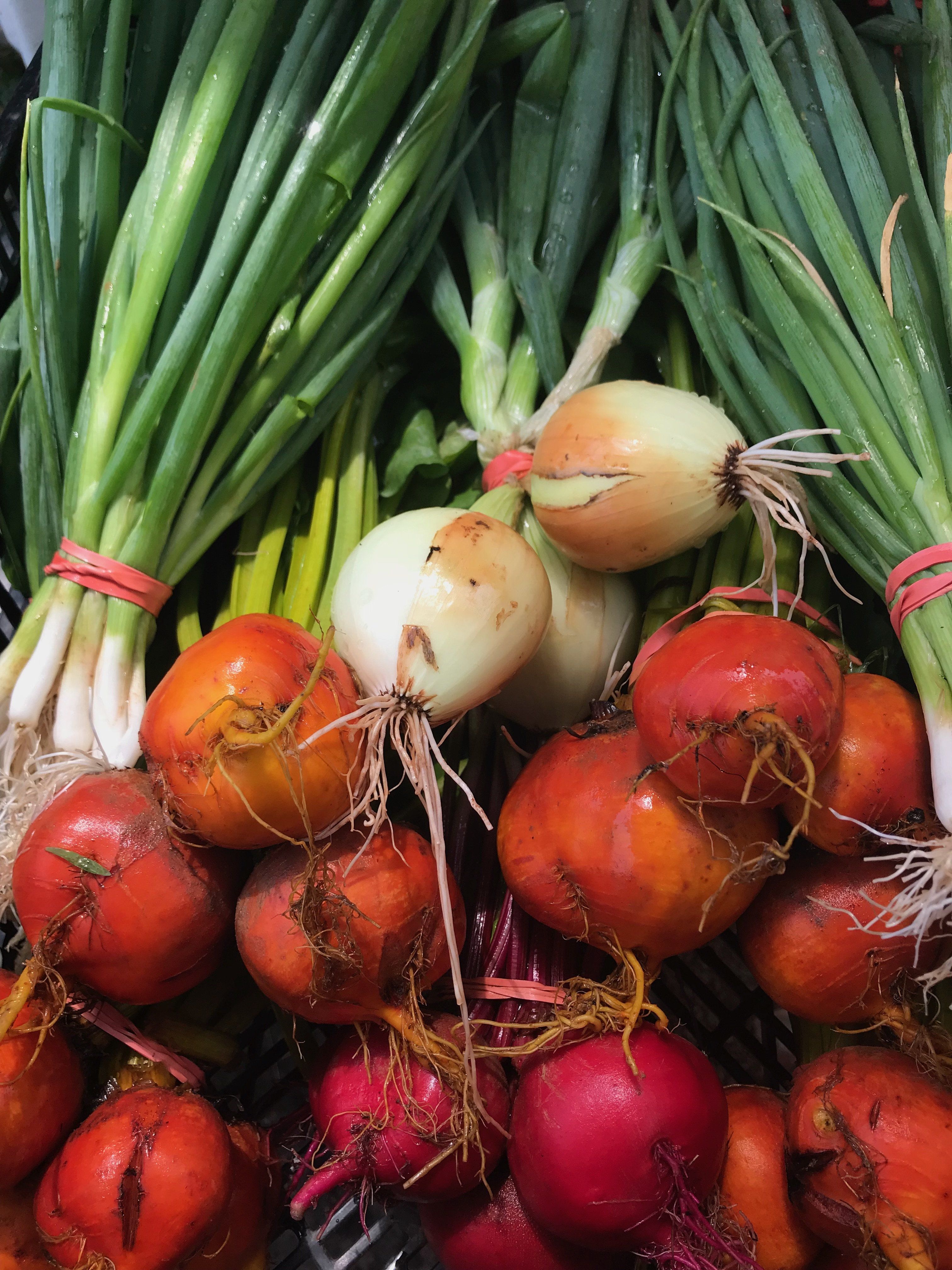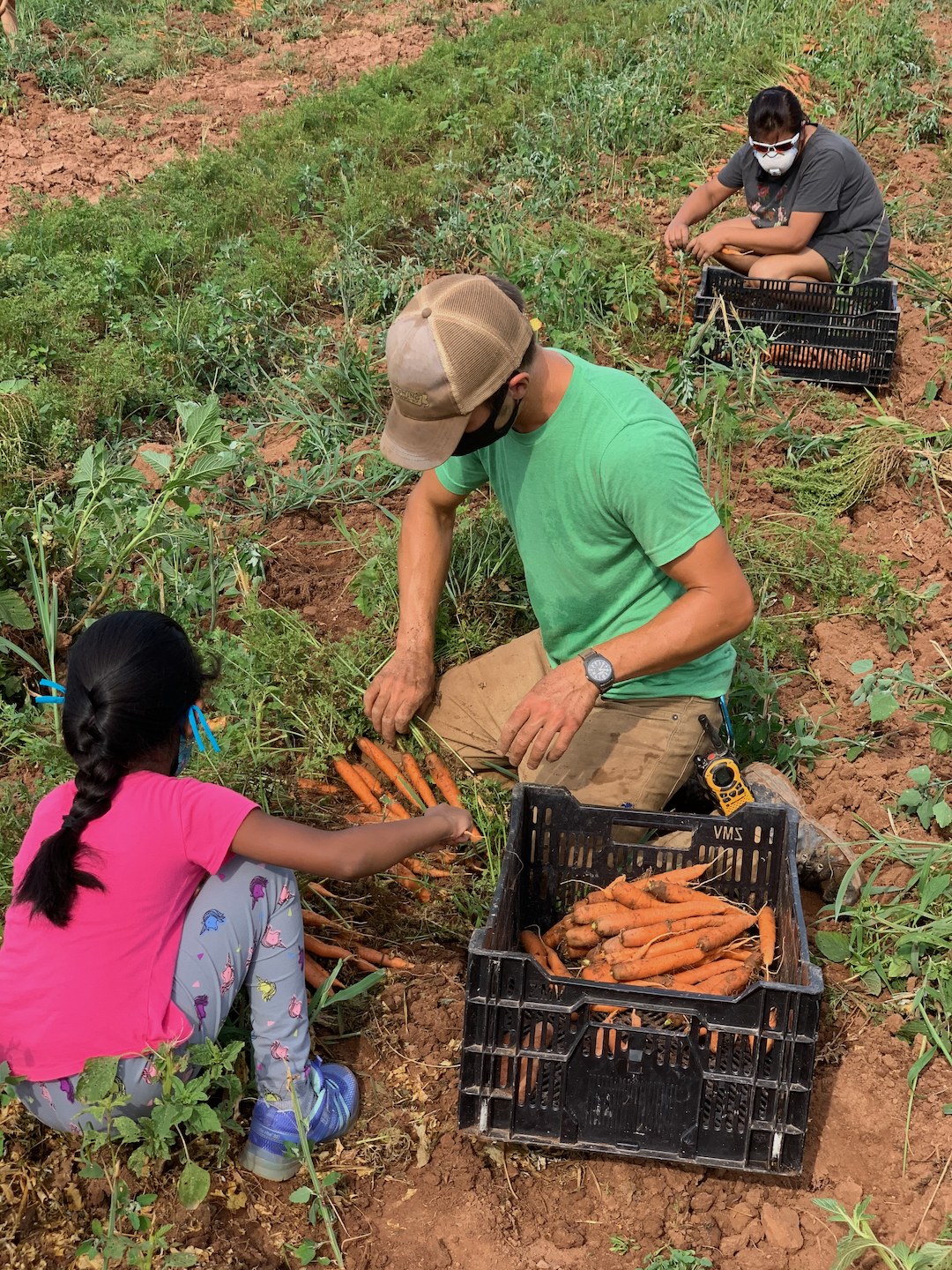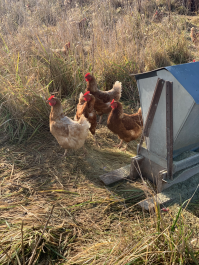In this era of Instagram, farming is full of sunsets over the fields, brightly colored produce, and close-ups of farm animals. To be honest, I think farmers are quite comfortable with this rosy portrayal because we wear rose colored glasses ourselves. We grow veggies and raise animals so we can eat things that are grown and raised the way we think is best. Despite our positive outlook, there are hard days, particularly with raising livestock.
This past week, we lost close to 30 hens from our laying flock to a nighttime predator. Any good farmer will tell you that livestock are not pets; that doesn’t mean we don’t feel their loss. We wouldn’t be responsible stewards if we weren’t keenly aware of, and devoted to, the needs of the animals in our care. That means painstakingly creating habitats and living quarters that reflect the most natural behavior for each species.
The cornerstone of our poultry program at Willowsford Farm has always been allowing our hens to forage during the day, as they have evolved to do. We enclose them only with large, mobile fencing units wired for electricity to deter predators. Their wagon-like coops have solar doors that are automatically triggered by sunrise and sunset. The flock has daily access to roam in grass and heavy shrubbery on the back acreage of the Grange farm plot we call G1. This freedom to forage adds omega-3 fatty acids and other important nutritional components to their eggs, and, we hope, a higher quality of life for the chickens.
Did you know chickens are nearly blind at night? Their daytime vision is more sophisticated than ours, but in the dark, they cannot see at all. As a result, they are instinctually driven to find a safe place when the daylight begins to wane. Unfortunately, poultry can be stubborn creatures. Blogs and forums for homesteaders and backyard chicken keepers are filled with questions and stories about chickens who refuse to roost in the right place. Sometimes during the long twilights of summer, they can be led astray by their instincts and choose to roost in shrubs and low trees instead of the safety of the coops we’ve designed to be predator-proof. Sometimes, a single chicken blocking the ramp to the coop can be enough to convince dozens of others to look elsewhere for sleeping arrangements. Sometimes, they spend the night outside without incident.
This time, our stray hens were found by what we presume to be a fox. For the next few months, some of you with egg shares may see cartons with Whiffletree Farm’s logo instead of ours. The loss will reduce our own weekly egg totals by about 150. You can rest easy knowing that Farmer Jesse and his family manage their poultry with the same methods that we use and produce eggs of equal quality.
As much as we respect the importance of the food chain and the wildlife at Willowsford, we always hope that the grimmer aspects of nature will not intrude on our farmland or our livestock. Rather than blaming the fox who outsmarted the hot fence, or the chickens who didn’t know any better, we blame ourselves. With heavy hearts, we discuss modifications to coop design and make phone calls looking for replacement pullets. Farmer Collin will be back at the Grange every night for a while, tucking in chickens and re-training stragglers to head for the coop. It’s better to be a little heartbroken than to work without investing your heart.
Meal Plan Week #11
- Satisfy your sweet and spicy cravings all at once with Peach & Jalapeno Cornbread
- Have you made "zoodles"? This Zucchini Pad Thai is the perfect introduction
- Eggplant is more versatile than you think! Try this Eggplant Tomato Basil Skillet Pasta, or make a Classic Caponata
- We've got boatloads of the "T" in BLT. Use the cherry tomatoes in a BLT Pasta Salad with Jalapeno Dressing, and the heirlooms tomatoes for a gooey, crispy, phenomenal Cheesy Breakfast BLT
- Summer isn't summer until there's Gazpacho. This is the very best way to make watermelon into dinner! Serve with grilled salmon.
- When warm weather is calling and you need to cook fast so you can get back outside, a Sheet Pan Ratatouille with Sausage is the answer




